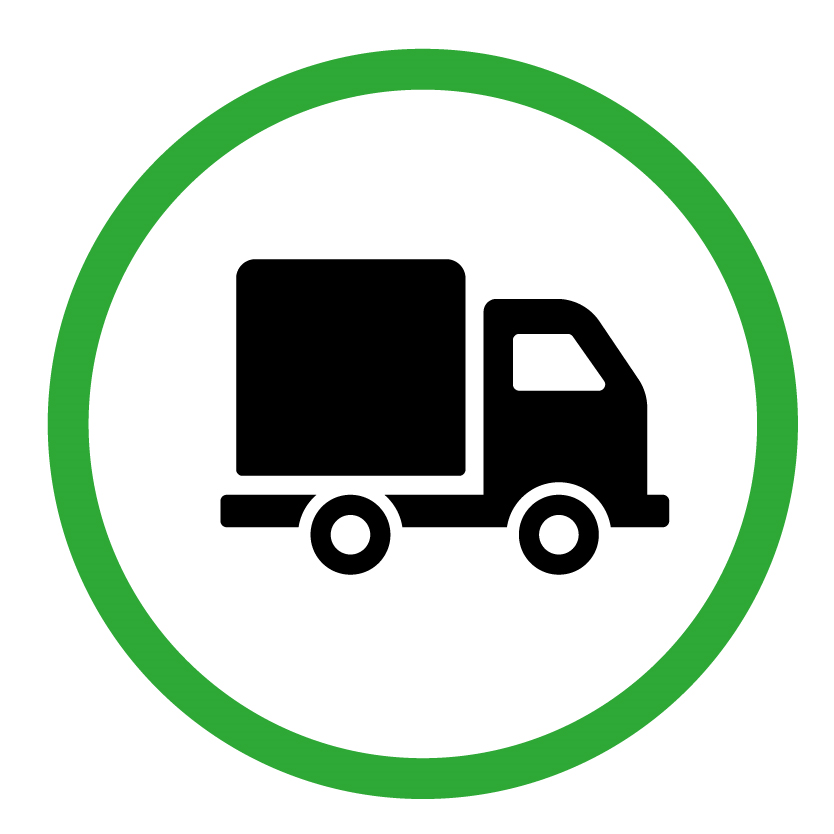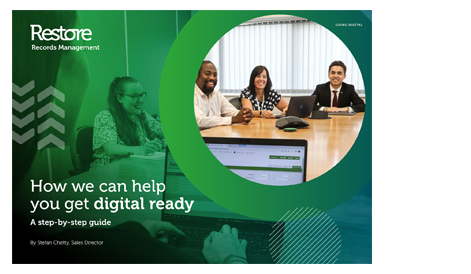
Five ways to make space with records management
As organisations begin to work even harder to bring people back to the workplace, space is re-emerging as a business priority.
No, not that kind of space – we’re not launching records management astronauts just yet!
We’re talking about a need for space in the new-look workplace. Comfortable seating areas, for instance, which encourage collaboration. A place where people can talk, catch up and be creative.
After all, if you’re trying to tempt employees who have grown used to working from home back into the workplace, then you need more than a row of desks and cabinets with a kitchen at the end of the room to do it.
And there’s growing evidence that people ARE returning to the office.
The Department of Transport data shows that national rail passenger numbers have now reached over 100% of pre-Covid levels, which suggests the commute is back on as companies increasingly ask employees to be in the office at least three or four days a week. [1]
Nigel Dews,
Managing Director, Restore Records Management.
So, the big question is: how do you create space for them?
Many businesses downsized after the pandemic, so they don’t have much to work with.
We know that because our sister brand Harrow Green, experts in workplace relocation and design, regularly tracks workplace trends.
They’ve told us that for a significant number of businesses, it’s not about moving offices in the new era, it’s about redesigning the current one to create space. These companies have already downsized but now need to redesign and reconfigure.
Here are 5 ways to create space, save money, save time and optimise your inventory:

1. Move your records off site
The first place to begin is all those filing cabinets, desk drawers, cupboards and boxes full of paper records. It’s time to take them off site.
By moving them to Restore Records Management you not only create space in the office, delivering a paperlite, clear-desk environment, but also take greater control over your physical data.
That is good for information security and data protection, too – and it optimises your inventory because you know where all your records are – in one place. Just think of all the people who have access to records when they are stored in a filing cabinet – and then leave them on a desk somewhere. Now those documents are impossible to find – but can also be seen by people who shouldn’t see them. It’s a GDPR risk.
Once those documents are managed off site with a records management expert you can control who accesses data and be certain where every single record is. We’ll also ensure it isn’t kept beyond its retention date.
2. Speed up retrieval of documents
Some businesses worry that by moving records off site, access may be slower and more complex. But the opposite is true.
At Restore Records Management we have over 50 sites across the country, which means there’s always one near you. So, delivery is quick – we even offer a same-day service.
And for those who need documents immediately, there’s a scan-on-demand service which means those files can be delivered electronically.
It’s worth considering how fast retrieval really is when you store documents on your own premises.
Do you know for certain what’s in your filing cabinets? If not, then finding the right ones is probably not that easy.
If you also have legacy documents on site, it’s not unusual that they will have been shoved into boxes in the basement and not easily searchable.
Switching to off site management, including delivery and scan on demand, can now be a really flexible solution.
For instance, if there’s no need for daily deliveries, we can create a bespoke approach. Perhaps your people only work on Mondays, Thursdays and Fridays. We’ll deliver on those days only.
Perhaps you need certain files quickly and regularly – we’ll digitise those records or scan them on demand. Or if it’s slightly less urgent they can be delivered in physical form – the next day or even the same day.

3. Get rid of those filing cabinets altogether
So, you’ve saved space, you saved time. Now it’s time to save some money, too…
The first thing to consider is how much those filing cabinets are costing you.
According to our sister company, Harrow Green, the figures are high.
For an office in West London, for instance, the cost associated with storing just four filing cabinets is £1,527.50 per month (based on the average rental price per square foot).
We’ve heard businesses say they like to keep records onsite because it doesn’t cost them any money. But that simply isn’t true.
Think how much office space costs in big cities such as London. It’s currently as much as £82.50 per square foot according to the London Office Rent Report 2023.
Then think about how much space a filing cabinet takes up. A typical four-drawer unit is estimated to take up to 17 square feet of office space when you include the size of the unit plus the amount of space required to access files inside it.
It all adds up to a lot of hidden costs.
What else could you do with that space if the files were moved into secure storage with a records management partner?
It’s estimated that every person employed takes up about 100 square feet if you include the desk, chair and some form of filing. Perhaps 2 square metres is taken up by filing space. So, if you multiply that by every employee in the business, it’s a big number. [2]
4. Reducing your inventory and start the digital journey (in a cost-effective way)
Moving files off site has many extra benefits – including an opportunity to finally begin the digital journey by reducing your inventory and scanning the records you need most often.
In our experience, it’s a big discussion point in boardrooms right now.
A lot of businesses who were adamant they would always have a physical data system, changed their minds during the pandemic when everyone was at home and needed remote access to documents.
This was especially true in the legal sector.
One customer with a high number of files stored with us is happy with a physical data solution and prefers it that way. But then, suddenly, when the pandemic struck, staff required access to files at home.
As a result, they used our services to scan on demand and were so impressed with how it worked that they decided to become a ‘digital first’ organisation, encouraging employees to always request a digital copy unless the physical files are essential.
The result?
A big reduction in files that are stored on the customer’s premises – with the office space being used for fee earners and their support staff instead.
There have been improved cost efficiencies, too, from digitising documents that previously would have been retrieved from storage multiple times.


5. Embrace the new world: Hybrid records management systems
Still think records management is ‘only’ about storage? It’s time to change the rhetoric.
Physical storage has grown up and evolved in recent years– and it’s a lot more high-tech than you may realise.
In fact, a hybrid solution which mixes physical and digital side by side can be a great stepping stone to going digital – or even a viable long-term alternative.
It’s one of the reasons we’re trying to change the language in our industry.
The word ‘storage’ doesn’t really do us justice. We aren’t there just to ‘store’ your documents and then forget about them.
We’re there as a records management expert to advise on how to optimise your inventory and build a modern information strategy.
So, giving your physical data to a third party isn’t about storage – it’s about managing that data and getting the most from it.
The reality is it’s virtually impossible to properly manage your inventory if it’s spread across a lot of different destinations. Filing cabinets in the office, multiple desk drawers and unmarked boxes in the basement. Maybe even a rented room outside the premises.
With that kind of strategy, a business doesn’t have clear visibility of its inventory – and probably doesn’t know where every document is. That’s a GDPR risk, too…
Conclusion
In summary, it’s fair to say that a modern records management service isn’t about archive storage anymore – it’s about accessibility, managing documents through an internet portal, embracing a scan on demand service and starting the journey to digital transformation.
Saving you space. Saving you time. Saving you money.
So, next time you begin thinking about space, it’s time to go up, up and away with Restore Records Management.
You’ll be over the moon if you do.
Further insights



